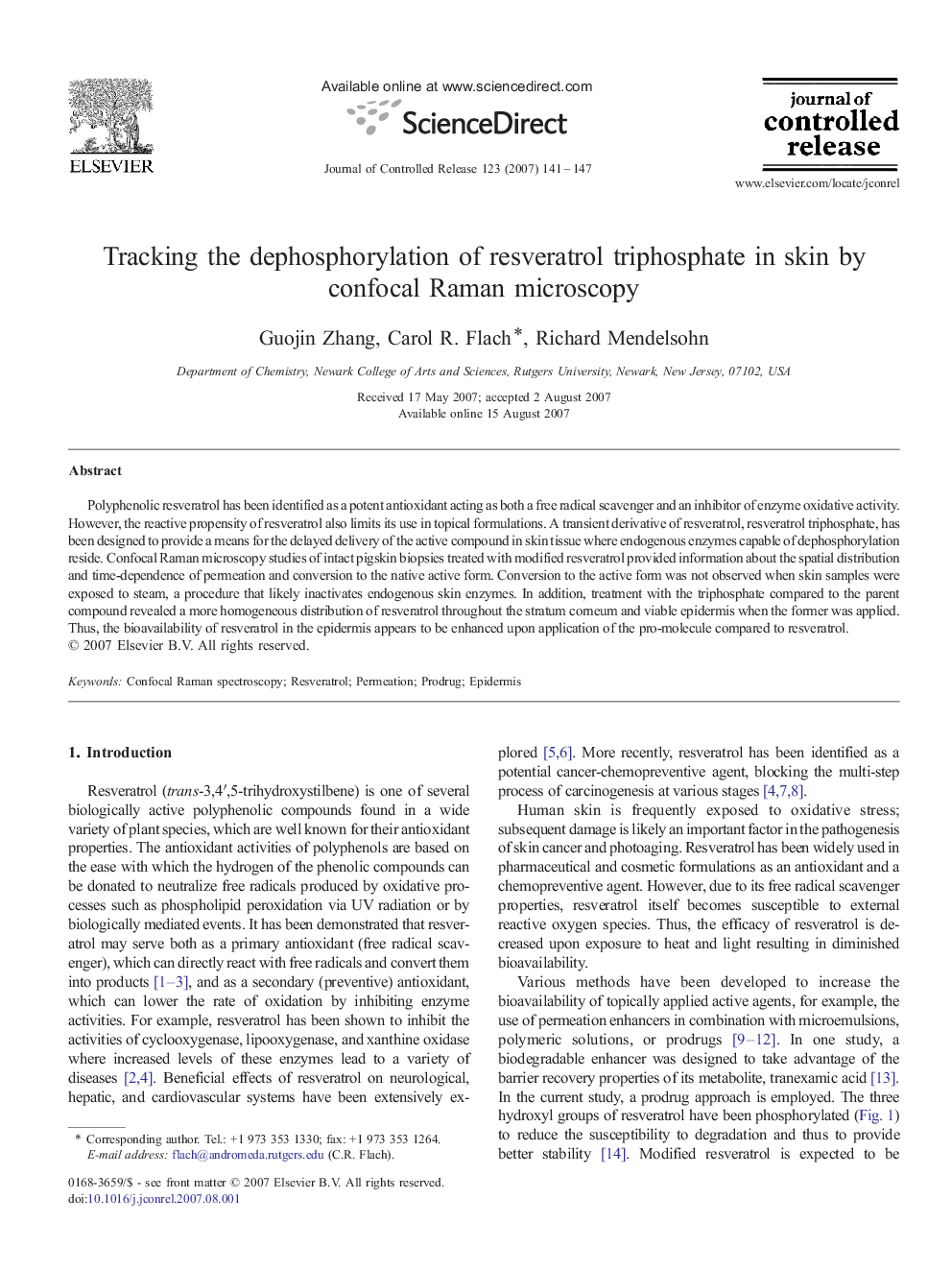| Article ID | Journal | Published Year | Pages | File Type |
|---|---|---|---|---|
| 1426996 | Journal of Controlled Release | 2007 | 7 Pages |
Polyphenolic resveratrol has been identified as a potent antioxidant acting as both a free radical scavenger and an inhibitor of enzyme oxidative activity. However, the reactive propensity of resveratrol also limits its use in topical formulations. A transient derivative of resveratrol, resveratrol triphosphate, has been designed to provide a means for the delayed delivery of the active compound in skin tissue where endogenous enzymes capable of dephosphorylation reside. Confocal Raman microscopy studies of intact pigskin biopsies treated with modified resveratrol provided information about the spatial distribution and time-dependence of permeation and conversion to the native active form. Conversion to the active form was not observed when skin samples were exposed to steam, a procedure that likely inactivates endogenous skin enzymes. In addition, treatment with the triphosphate compared to the parent compound revealed a more homogeneous distribution of resveratrol throughout the stratum corneum and viable epidermis when the former was applied. Thus, the bioavailability of resveratrol in the epidermis appears to be enhanced upon application of the pro-molecule compared to resveratrol.
